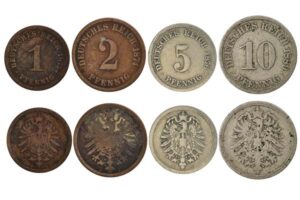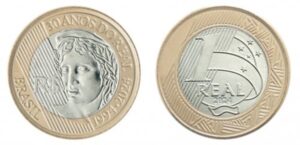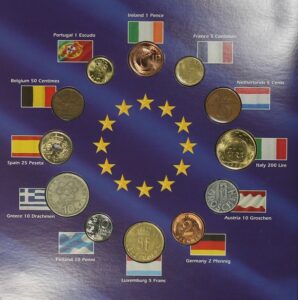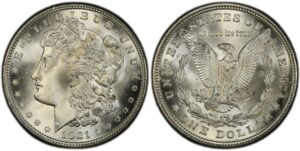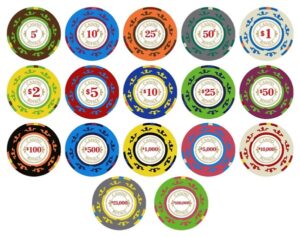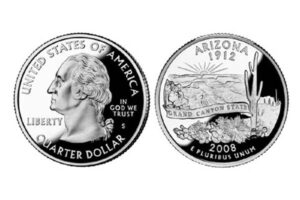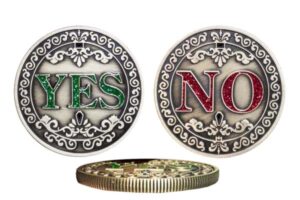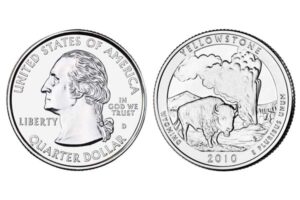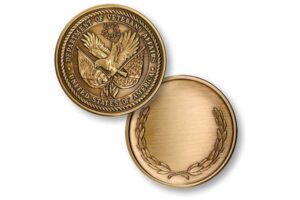
I have often worried about the real cost of gold in different places. I faced confusion and doubts. Then I found clarity about Germany’s gold market.
Gold in Germany can be found near spot price if you look for specific coins. Many older European coins, such as Francs or Sovereigns, are often VAT-free. This helps buyers purchase them at prices close to gold’s market value.
I remember my first trip to Germany. I wandered into a small coin shop and discovered unexpected deals. This moment sparked my deeper research. Let me share more insights, so we can learn together.
What is the best gold coin in Europe?
I always wondered which European gold coin stands out in terms of purity and fame. My search led me to the remarkable Vienna Philharmonic1, with a long history of recognition.
The Vienna Philharmonic coin is famous for its 999.9% gold content2 and multiple size options. It circulates widely throughout Europe. Many collectors appreciate its pure composition, iconic design, and strong resale value. It remains one of the top choices for reliable gold ownership.
When I explored European gold coins, I found many reasons why the Vienna Philharmonic stands out. I see its popularity in both collector circles and mainstream investment conversations.
The Austrian Mint’s Legacy
The Austrian Mint3 has a rich history of producing quality coins. Their craftsmanship blends tradition and modern techniques. This ensures each piece meets strict standards. I admire how they honor Austria’s cultural heritage, while also addressing global demand for gold.
Key Specifications
The Vienna Philharmonic coin comes in different weights, like 1 ounce, 1/2 ounce, 1/4 ounce, 1/10 ounce, and 1/25 ounce. The purity is 99.99%. The face value is in euros, which underlines its status as legal tender in Austria.
Here is a quick breakdown of the primary sizes:
| Size | Weight (troy oz) | Diameter (mm) | Face Value (EUR) |
|---|---|---|---|
| 1 oz | 1.0 | 37.0 | 100 |
| 1/2 oz | 0.5 | 28.0 | 50 |
| 1/4 oz | 0.25 | 22.0 | 25 |
| 1/10 oz | 0.1 | 16.0 | 10 |
| 1/25 oz | 0.04 | 13.0 | 4 |
Why Collectors Love It
Many collectors seek the Vienna Philharmonic because it has high liquidity. Dealers often recognize it, so reselling is smooth. I appreciate the coin’s design, featuring the famed Viennese orchestra's instruments. This iconic look adds elegance and cultural significance.
Critical Considerations
I also think about costs. Though the Philharmonic holds strong value, local premiums vary. Sometimes, I compare these premiums with other gold coins like the Krugerrand or the American Eagle. Each coin has unique perks. I weigh purity, popularity, and budget before buying.
In my experience, the Vienna Philharmonic remains a consistent option. It delivers high gold content, artistic beauty, and proven market acceptance. Every time I debate which European gold coin to pick, I come back to this one for its strong balance of prestige and reliability.
How much is 3,000 ducats?
I once read about historical ducats4 and their value today. The numbers can be stunning. Their worth depends on gold content, collector interest, and shifts in currency values.
Three thousand ducats can be worth millions in modern currency. One estimate suggests around £8,353,000 or about $11,372,751.50. This number varies by gold spot price and numismatic premiums. I find it amazing to see how centuries-old coins command huge figures today.
I grew curious about the origin of ducats when I first saw an ancient piece in a friend’s collection. Ducats trace back to medieval Europe, once minted by various city-states and empires. They carry strong cultural significance.
Historical Background
The ducat started in Venice during the late 12th century. Over time, it spread across Europe. Monarchs and local rulers adopted this coin for trade. The coin’s stable gold content made it a trusted currency. I feel fascinated by its longevity.
Modern Value Factors
Today, ducats no longer circulate widely as day-to-day currency. Their value now stems from:
- Gold Content: Many ducats contain high-purity gold.
- Collector Demand: Rare older issues attract premium prices.
- Cultural Significance: Historic ties boost interest among enthusiasts.
In some cases, you find modern restrikes minted by official authorities. These pieces still carry the ducat design and purity but often target collectors. I like that modern versions maintain ties to past traditions.
Example Price Estimates
Let’s consider approximate prices. If each ducat contains around 3.5 grams of gold, 3,000 ducats would total about 10,500 grams. That is roughly 337.9 troy ounces. With gold’s spot price fluctuating, the number changes daily.
| Number of Ducats | Total Gold (g) | Total Gold (oz) | Approx. Value* |
|---|---|---|---|
| 1 | 3.5 | 0.112 | Varies with spot |
| 3,000 | 10,500 | 337.9 | Millions |
*Value depends on collector premiums and gold spot price.
Surprising Nuances
I discovered that historical ducats might hold more worth than just metal content. Certain rare dates command extraordinary sums. Condition also affects desirability. When I weigh 3,000 ducats, I see a blend of historical weight, gold content, and collectible intrigue.
Studying ducats gave me a new respect for old European coins. Their place in history and continued relevance in modern investing highlight the power of gold as a universal store of value. Every time I encounter a ducat, I remember the centuries of trade, war, and commerce that shaped it.
What gold coins are used in European countries?
I keep seeing new gold coins from different European nations. Each country has a story to tell through its designs. It is fascinating to compare their sizes, purity, and appeal.
Popular European gold coins include British Sovereigns, 20 Francs from France or Switzerland, and modern Euro-gold coins. Many are 22-karat, making them durable. Others lean toward 24-karat purity. These coins are often smaller in weight, improving accessibility and liquidity for collectors and investors.
I encountered different gold coins while traveling through Europe. Some coins carry deep historical significance. Others are newer releases that reflect modern values. Each design showcases local heritage and artistry, making them appealing to me.
British Sovereigns
These coins are well-known. They feature a portrait of the reigning monarch on one side and Saint George slaying the dragon on the reverse. They are typically 22-karat gold. The weight is about 7.98 grams. Sovereigns have circulated for centuries.
20 Franc Coins
France and Switzerland both produced iconic 20 Franc gold coins. These coins often highlight national symbols, like the Swiss Helvetia or the French Marianne. They usually come in .1867 troy ounces of gold. I appreciate their classic imagery.
Euro-Gold Coins
In recent years, many European countries introduced coins denominated in euros. They might be 22-karat or 24-karat. Their face values range from 10 euros to 200 euros or more. They offer a modern take on gold coinage. I find these interesting to collect.
Size and Liquidity
Many European coins come in smaller weights, like 1/5 oz or 1/4 oz. These pieces are easier to purchase in bulk. This also helps with liquidity if I ever need to sell. I can sell smaller quantities rather than one large coin.
Here is a quick comparison of notable European gold coins:
| Coin | Karat | Approx. Gold Content | Design Feature |
|---|---|---|---|
| British Sovereign | 22 kt | .2354 oz | Monarch portrait, St. George reverse |
| French 20 Franc | 90% Au | .1867 oz | Marianne or Rooster |
| Swiss 20 Franc | 90% Au | .1867 oz | Helvetia |
| Euro Gold Issues | 22-24 kt | Varies | Modern national or commemorative themes |
Practical Buying Tips
I usually verify authenticity through reputable dealers. I also check hallmark stamps and request official certificates if possible. Storage options matter, too. Small coins fit well into secure pouches or tubes. Insurance is also crucial for peace of mind.
Exploring Europe’s gold coins always feels like a journey through time. I see centuries of history reflected in each piece. The variety and cultural depth keep me engaged and eager to learn more.
Before I end, I want to share a resource for anyone seeking customized gold-plated or silver coins. I run a factory named INIMAKER in China. We focus on B2B and wholesale only. We produce medals, badges, commemorative coins, and challenge coins. Our factory has four production lines that handle bulk orders efficiently. We mainly export to the United States, Russia, France, the United Kingdom, and other European and American regions. Possible buyers include corporate clients, sporting goods stores, travel companies, museums, and coin dealers. We offer deep customization. We also promote our products through Alibaba, exhibitions, and our own site. I have seen teachers use our coins for interactive lessons. I have also watched hobbyists build impressive collections with our unique pieces. If you have ideas or special requests, feel free to contact me, Joshua White, at info@inimaker.com or visit www.inimaker.com. I would be glad to explore new creative possibilities.
Kesimpulan
Collecting gold coins often opens a new world of culture, history, and investment potential. I hope my insights help you decide wisely. Each coin carries a story and a value that transcends borders. May your gold journey lead to lasting satisfaction and reward.
-
Exploring this link will provide insights into the Vienna Philharmonic's unique features, such as its 999.9% gold purity and strong resale value, making it a top choice for collectors and investors. ↩
-
This link will explain the importance of 999.9% gold purity in investment coins, highlighting its impact on value, desirability, and marketability. ↩
-
Discover the Austrian Mint's legacy and craftsmanship, which ensures high-quality gold coins that blend tradition with modern techniques, appealing to both collectors and investors. ↩
-
Learning about the factors that influence ducats' value today can help collectors and investors understand the historical and financial significance of these coins. ↩

